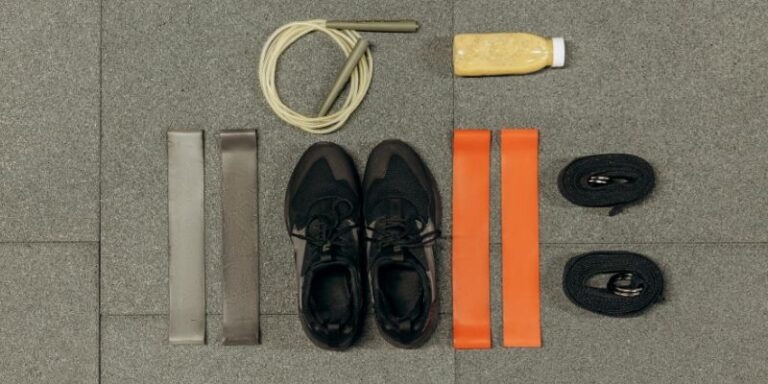If you’ve been practicing yoga for a while, you’ve likely heard the term “Yoga Butt.” Maybe you’ve even experienced that nagging pain in the lower buttocks that makes sitting, bending, or even walking uncomfortable. For many yoga enthusiasts, this condition can be both frustrating and confusing.
But don’t worry. In this article, we’ll unpack what Yoga Butt is, why it happens, and how you can avoid it while still enjoying your yoga practice. Let’s dive in.
My First Encounter with Yoga Butt
A few years ago, during a particularly intense Vinyasa class, I felt a sharp twinge in my lower buttocks. I brushed it off as just another post-workout ache. But as days turned into weeks, the dull ache persisted, and my favorite forward bends became unbearable. A quick Google search led me to the term “Yoga Butt” and suddenly, everything made sense.
If this story sounds familiar, you’re not alone. Yoga Butt, or proximal hamstring tendinopathy, is a common condition among yoga practitioners. But the good news is, it’s preventable and treatable.
What is Yoga Butt?
Yoga Butt occurs when the tendons connecting your hamstrings to your sit bones (ischial tuberosity) become irritated or inflamed. This typically happens due to overstretching or improper technique during yoga poses. While it’s not exclusive to yoga practitioners, those who engage in deep forward bends or splits are particularly susceptible.
Symptoms of Yoga Butt:
- Pain in the Lower Buttocks: A deep, dull ache where your hamstrings meet your pelvis.
- Stiffness and Weakness: Difficulty bending forward or sitting for extended periods.
- Pain During Activities: Running, sitting, or even walking can exacerbate the discomfort.
Why Does Yoga Butt Happen?
Yoga Butt often stems from a combination of factors, including:
- Overstretching: Deep forward bends and splits can push your hamstrings beyond their limit.
- Poor Alignment: Misaligned poses place undue stress on the hamstrings and tendons.
- Overuse: Practicing too frequently without adequate recovery time.
- Lack of Warm-Up: Jumping into intense stretches with cold muscles increases the risk of injury.
The Science Behind Yoga Butt
According to a study published in the Journal of Orthopaedic & Sports Physical Therapy, repetitive overuse of tendons can lead to microscopic tears and inflammation. The hamstrings’ proximal attachment at the pelvis is particularly vulnerable due to its role in both stability and movement.
Yoga practitioners should be mindful of their body’s limits, especially during dynamic or deep poses. Seeking advice from a certified instructor or physiotherapist can also help ensure proper form and technique.
How to Prevent Yoga Butt
Prevention is key, and it starts with mindful practice. Here are some actionable tips:
Warm Up Properly
Before attempting deep stretches, spend 5-10 minutes warming up. Gentle movements like cat-cow stretches or sun salutations can prepare your muscles and prevent injury.
Focus on Alignment
Pay attention to your posture in each pose. Engage your core, distribute your weight evenly, and avoid overextending your hamstrings. Consider using props like yoga blocks or straps to maintain proper alignment.
Strengthen Supporting Muscles
Weak hamstrings and glutes are more prone to injury. Incorporate exercises like bridges or lunges into your routine to build strength and resilience.
Modify Your Practice
If you feel discomfort during a pose, back off. Modify poses to suit your body’s needs. For example, in forward folds, bend your knees slightly to reduce strain on your hamstrings.
Rest and Recover
Listen to your body. Take breaks when needed and incorporate recovery tools like foam rollers or massage balls into your routine.
Treating Yoga Butt
If you’re already experiencing symptoms, don’t push through the pain. Here’s what you can do to recover:
Rest
Avoid activities that exacerbate the pain. Rest gives your tendons time to heal.
Ice and Heat Therapy
Use ice packs to reduce inflammation and heat to relax tight muscles.
Gentle Stretches
Stick to light, non-painful stretches. A yoga strap can help you stretch safely without overextending.
Massage and Therapy
Use tools like massage balls or seek professional help from a physical therapist to release tension and promote healing.
A Holistic Approach to Recovery
In addition to physical treatments, consider these holistic practices:
- Mindfulness and Meditation: Reduce stress and tension that may contribute to muscle tightness.
- Nutrition: Foods rich in omega-3s and antioxidants can help reduce inflammation.
- Yoga Philosophy: Embrace the yogic principle of “Ahimsa” (non-harming) by being gentle with your body.
Quotes from the Experts
“Yoga is about balance, not just physically but emotionally. Overstretching to achieve a pose is counterproductive,” says Dr. Priya Mehta, a sports medicine specialist. “Listen to your body and know when to pull back.”
Integrating Prevention into Daily Life
Prevention doesn’t end on the mat. Here’s how to integrate these tips into your lifestyle:
- Take breaks if you sit for long periods to stretch and move.
- Incorporate yoga-friendly exercises like swimming or Pilates to balance your routine.
- Practice self-care by prioritizing sleep and hydration.
Final Thoughts
Yoga Butt might sound amusing, but it’s no joke when you’re dealing with persistent pain. The key to avoiding this condition is mindful practice, proper alignment, and adequate recovery. And if you’re already experiencing symptoms, know that with care and patience, healing is within reach.
So, next time you step onto your mat, remember: that yoga is a journey, not a destination. Take it slow, listen to your body, and let your practice be a source of joy and growth, not pain.
Have you experienced Yoga Butt? Share your story in the comments and let’s learn from each other!










